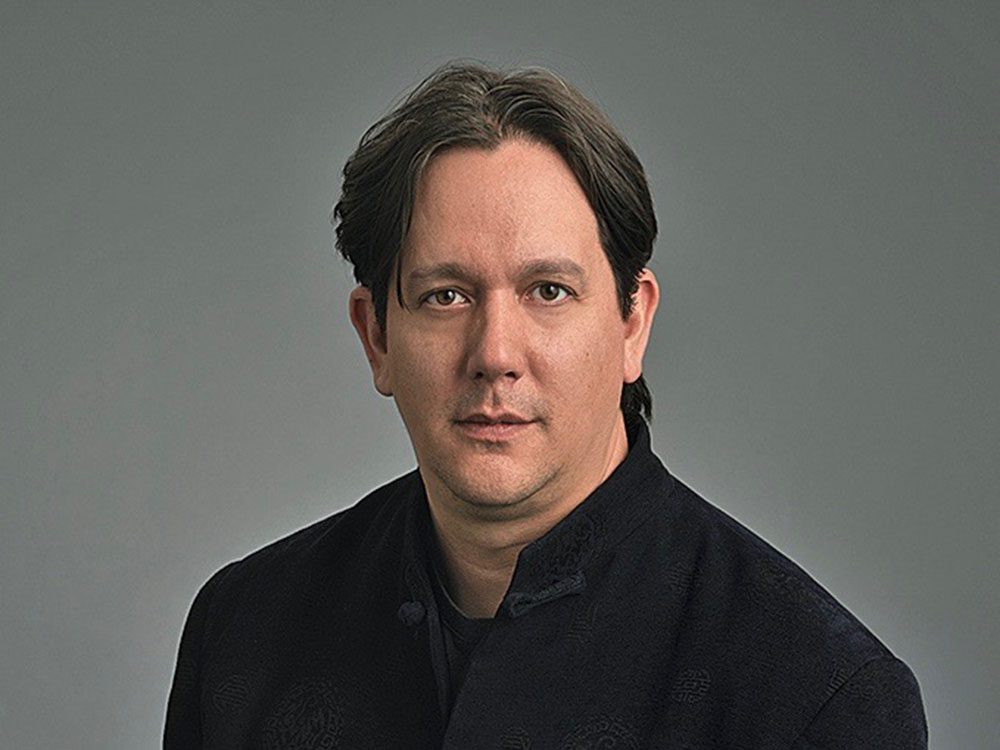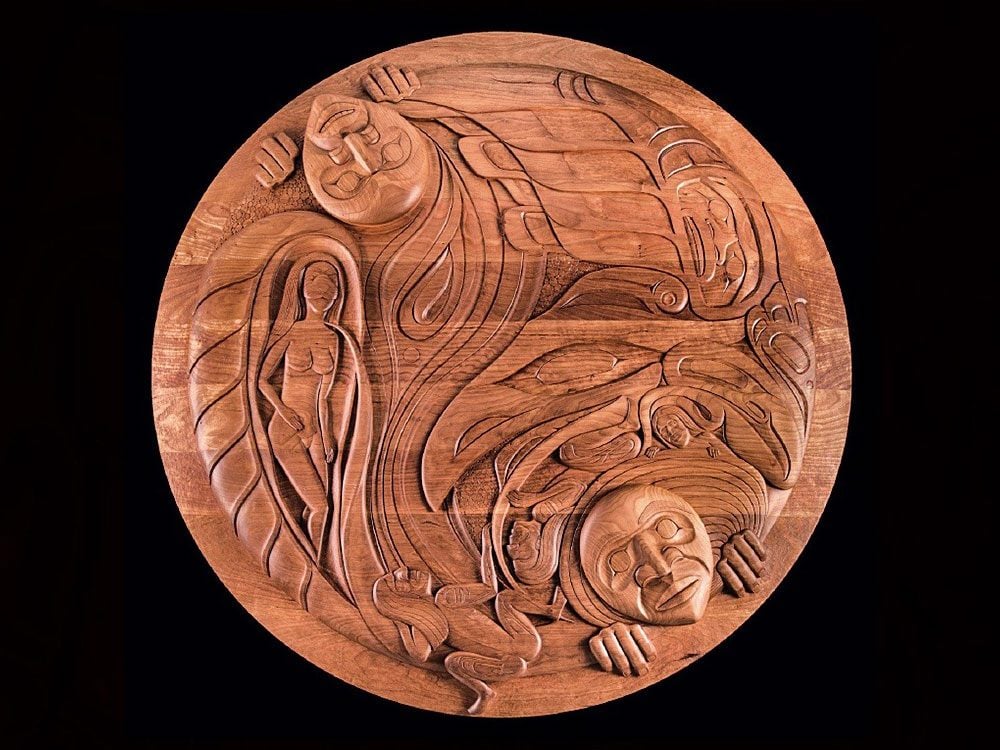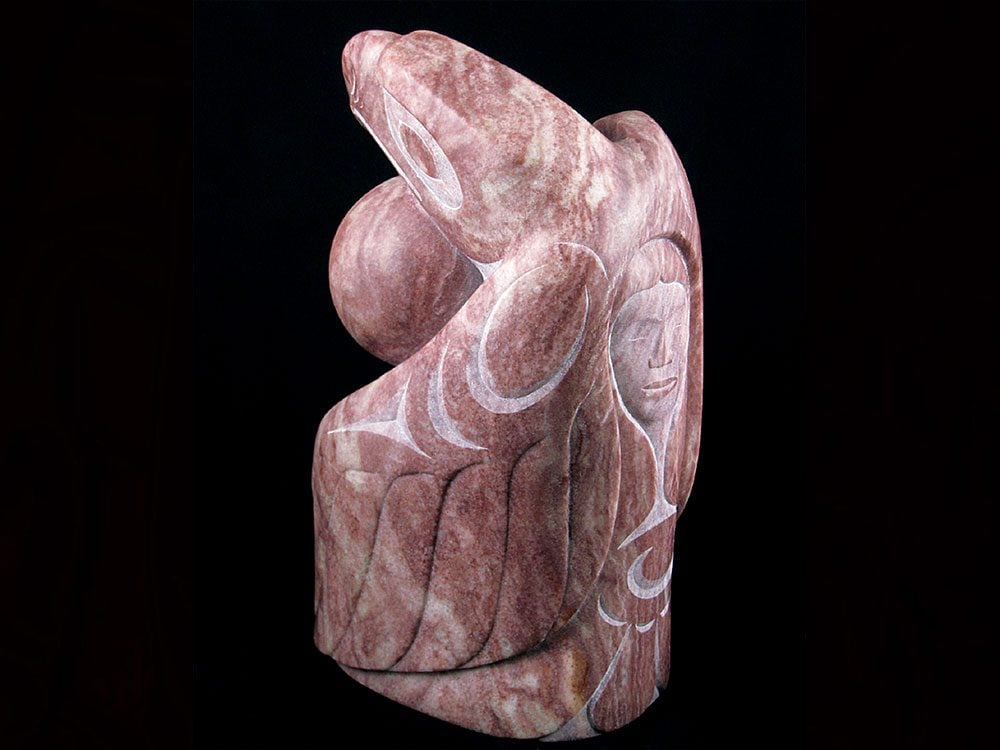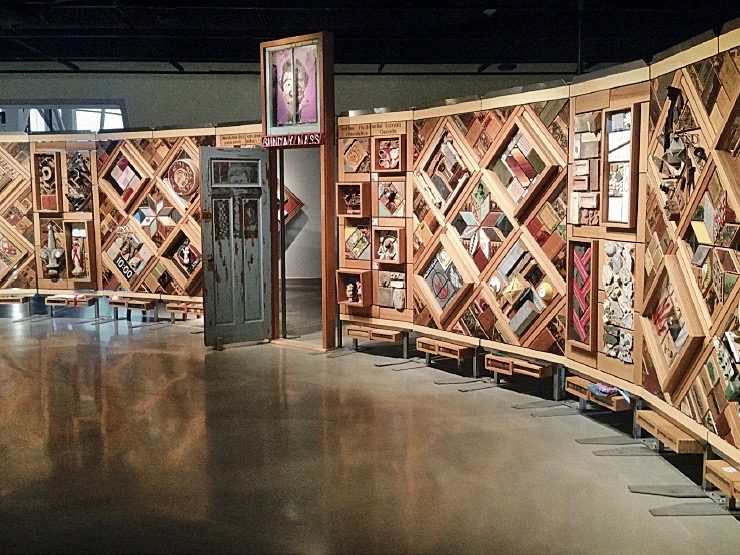
Evidence of Survival and Resurgence
My name is Carey Newman; my traditional name is Hayalthkin’ geme. On my father’s side, through my grandmother, I am Coast Salish from Cheam of the Sto:lo Nation, along the upper Fraser Valley. Through my grandfather, I descend from the Kukwekum, Giksam and Wawalabei’i Namima of the Kwakwaka’ wakw Nation on Northern Vancouver Island. On my mother’s side, I am English, Irish and Scottish.
I grew up knowing that one half of my family benefitted from the same colonial structures that harmed the other half. I was home or free schooled until post-secondary. Music and art lessons, building furniture with my grandfather, constructing a four-storey tree house, sports, reading books and playing with numbers, watching my father work, learning to carve, attending potlatches and cultural classes were all part of my childhood education. These early experiences combined to form my identity and indigeneity, and continue to inform my artistic practice and my perspectives on art, culture and the process of reconciliation.
I believe that novel artistic expression, from a person raised within cultural ways and understanding of nationhood, is not only the definition of a contemporary Indigenous artist, it is evidence of survival and resurgence. Cultural practice and traditional ceremony are vital to the endurance of Indigenous ways, but creating anew, as opposed to creating again, is the distinction between subsistence and holistic reclamation.
Find out how Buffy Sainte-Marie is making Canada better—for all of us.

The Constraints of Expectation
As a contemporary Coast Salish and Kwagiulth artist, from as far back as my memory reaches, I work in wood, stone, glass, metal and digital media. I design and create everything from fine jewellery to giant totems, from steel sculptures to a travelling monument. I have co-directed a documentary, produced a mobile app, studied classical piano and been a professional opera singer. Through public commissions and community engagement projects, my artistic and social justice interests have intersected, and I have become an advocate for Indigenous rights, speaking publicly about and working towards understanding reconciliation, cultural appropriation, decolonization, Indigenous identity and nationhood.
Early in my career, I believed in, and actively sought, perfection. I would pore over each design element, each knife stroke and often joked that I was never finished a piece until it was raised up out of my reach. With the completion of each work, in spite of all that I didn’t yet know, I would bask in the fleeting satisfaction of illusory perfection. Each assessment lacking periphery, each time deceived by my ego and naiveté. When I eventually became cognizant of this, I was unsettled by the futility of that cycle, and it took some deep contemplation and a shift in my fundamental thought process to regain my footing. That was the moment I truly became an artist, because that was the moment I untethered myself from the constraints of expectation and limits of economic concerns. Until then I had worked toward the price that I put upon a proposed commission, letting budget place parameters upon my practice. Without those practical considerations, I was free to discover, define and to work toward my own artistic ideals, searching for ways to integrate both deeper meaning and technical innovation into my pieces. It took experience and self-examination to get to where I can look at my past works, see the imperfections in not only form and technique, but also in motivation and artistic ideology, and recognize them as foundational to building my abilities and strengthening my vision. I no longer seek perfection; instead I pursue excellence, aware that I should always strive to exceed myself, taking satisfaction in the process. My pathway to meaningful artistic expression is critical reflection and lifelong learning.
Meet the woman working with Indigenous elders to preserve Canada’s plants.

Blue Raven Gallery
In 1996 I opened the Blue Raven Gallery, marketing my work and the work of my family and fellow artists. After completing more than 20 sell-out editions, and slowly developing my carving skills, I found myself in a position to accept and complete private commissions for corporations, government agencies and museums from around the world.
In 2008, I was selected as the master carver of the Cowichan 2008 Spirit Pole, a journey that allowed me to travel to the province of British Columbia, sharing the experience of carving a 20-foot totem with more than 1,000 people. In 2009, I was selected from a national call to artists by VANOC (Vancouver Organizing Committee for the 2010 Winter Olympics), and won the right to create a large installation. The piece I created, titled “Dancing Wind,” was featured during the Games, consisting of four large panels made from stainless steel, cedar and glass.
My involvement with the cultural community extends beyond my artwork, as I am continually learning about my people’s history and traditions, and, in the same way I benefitted from my father’s mentorship early in my career, I now devote time to mentoring younger artists.
One memorable undertaking was completing two totems with the “EAGLE Project,” a life-skills and employment program for Aboriginal youth that incorporated carving and raising monumental totems as a cultural component.
This Toronto school is teaching the ancient Indigenous art of mukluk-making.

Witness Blanket
More recently, I engaged residential school survivors, community members, and artists from across the country in a large-scale art installation known as the Witness Blanket. The name was chosen to reflect the cultural practice of witnessing as a form of record-keeping or truth-telling, and the blanket as a universal symbol of protection. Across many Native cultures, the blanket identifies who we are and where we’re from. We wear blankets in ceremony and give them as gifts, as they protect our young and comfort our elders.
With that image as inspiration, the Witness Blanket installation was created from hundreds of items reclaimed from residential schools, churches, government buildings, and traditional and cultural structures, including friendship centres, band offices, treatment centres and universities from across Canada.
The Witness Blanket now stands as a national monument to recognize the atrocities of the Indian Residential School era, honour the children, and symbolize the ongoing process of reconciliation. Through it, we share truth and try to come to terms with the impacts of colonial history, which through the cycle of intergenerational trauma, persist in our communities today. Learning from the past, creating art based on our accumulated knowledge, experiences and traditions, and encouraging forward movement towards a better future continue to be key motivators for me as an artist.
Don’t miss this inside look at the work of Sioux artist Maxine Noel!